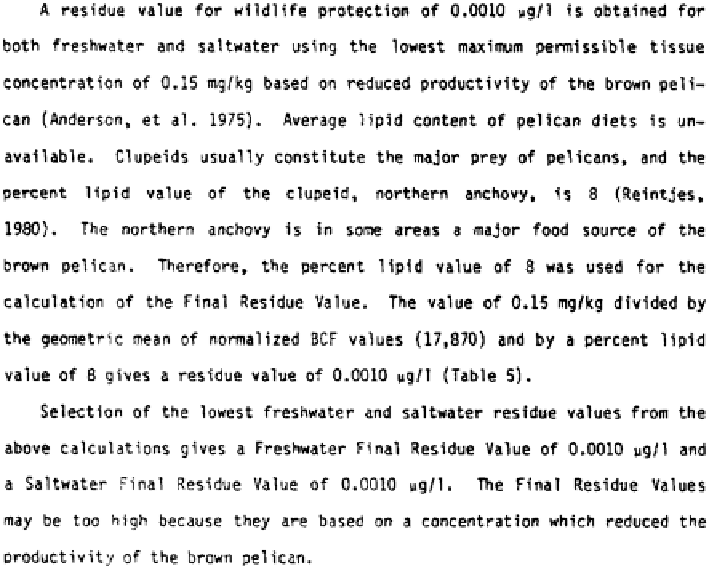Environmental Engineering Reference
In-Depth Information
diffi cult and produces uncertain results, limiting the utility of the criterion.
Measuring levels of DDT in fi sh is much easier and more certain. Therefore, a cri-
terion in fi sh is more useful than a criterion in water. This brings us to the question
of whether the 150 ppb DDT residue level in fi sh, which is the basis for the National
criterion and CTR standard in water, will protect wildlife, considering what is
known today. To remain consistent with the criterion, the fi sh residue should protect
the brown pelican, one of the most sensitive species to the reproductive effects of
DDT. This question is addressed in the following review of studies of DDT effects
on reproduction in brown pelicans.
A summary of the 1980 US EPA criterion is reproduced below:
The particular pelicans studied by Anderson et al. (
1975
) were reported to be
feeding on northern anchovies. The northern anchovy diet of the recovering popula-
tion of brown pelicans became the basis of the EPA chronic criterion to protect
wildlife. The fi sh residue of 150 ppb is based on a study in which the brown pelican
population was still recovering from the reproductive effects of DDT. The level of
reproduction was judged to be inadequate to sustain the population. However, the
authors referred to a slow reduction of DDE residues in brown pelican eggs com-
pared to the fi sh diet. The fi sh residue had declined 27-fold during a period in which
the egg residues had declined only ninefold. Moreover, DDT and DDE were detected
in fi sh in 1974, but only the more stable DDE was detected in brown pelican eggs
that year. Therefore, DDE in brown pelicans and in their eggs appears to have not

Search WWH ::

Custom Search